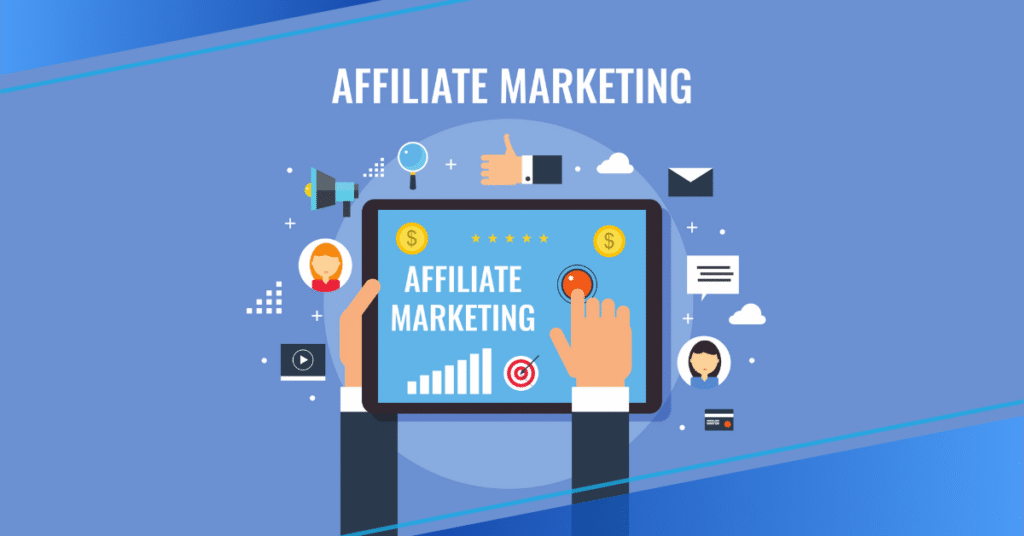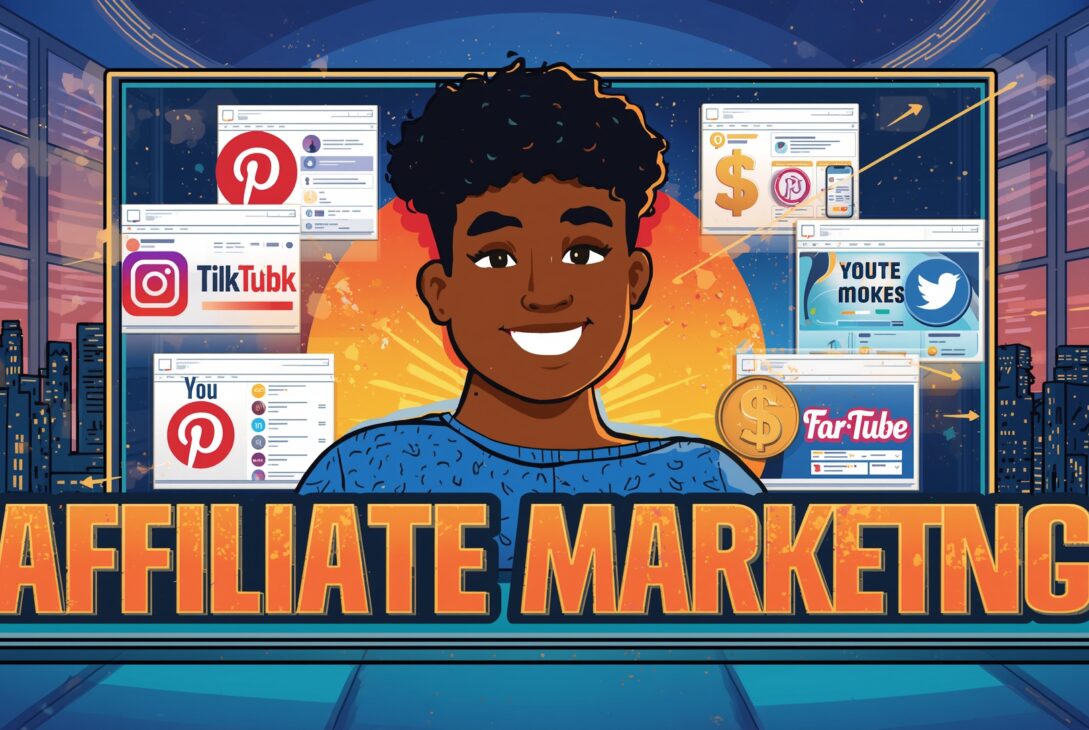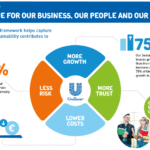Social Media Affiliate Marketing.The skill of turning your online influence into revenue through affiliate marketing is via social media. It is the intentional combination of intriguing material, built-in community, and performance-based sales. Whether you are a seasoned content creator or just getting started, knowing how to utilize each social network is essential for building a sustainable and profitable online business.
This is your roadmap for mastering affiliate marketing in 2025 throughout the social media environment, not just a guide.
What does affiliate marketing through social media entail?
Merchants utilize social media affiliate marketing to promote the products or services of other companies on your social media accounts. You give your audience your affiliate connection, which is a unique tracking link. When a user clicks on your link and performs the desired action, which is usually a purchase, you earn a commission.
- Because it leverages the trust and interaction you have developed with your audience to boost income, it is a robust model.
- The Ideal Venue for Affiliates: The Reasons Why Social Media is the Ideal Platform
- Because social media is used by billions of people every day, there are an unrivaled number of potential customers.
- Targeted Audiences: Platforms let you reach highly specialized sectors depending on interests, behavior, and demographics.
- People follow those they like and trust due to their high level of trust and influence. A recommendation from a creator is frequently more potent than a typical advertisement.
- Utilize text, images, reels, pins, video, and stories to market goods in a manner that is organic to each platform.
- Direct Engagement: You can establish a community around the things you enjoy by posing questions and receiving immediate responses.

The Ultimate Platform by Platform Breakdown
Every social media site has its own culture, algorithms, and recommended behavior. Winning on each one of these is accomplished as follows:
1. Instagram Affiliate Marketing
Best For: Travel, fitness, B2C products, beauty, fashion, lifestyle.
Content Approach:
- Reels: Use goods to make brief, interesting lessons, changes, or ready-with-me videos.
- Share rapid suggestions and create urgency with polls, Q&As, and the Link Sticker.
- Posts: High-quality carousel posts illustrating several applications or advantages of a good.
- Important Instruments: LinkinBio tools (Linktree, Beacons) and Instagram’s Affiliate Tool for approved creators.
2. Affiliate marketing for TikTok
Best for: Viral products, As Seen on TikTok items, Gadgets, Beauty, Fast Fashion.
Strategy of content:
- Include the product naturally and jump on sounds and trends.
- Concentrate on real unboxing experiences and video on problems and solutions.
- Grab interest in the first second using hooks.
- TikTok Shop is a game changer as it enables you to tag goods right in your videos.
3. YouTube Associate Marketing
Best for high-consideration buys, B2B, software, technology, and in-depth reviews, tutorials.
Content Strategy:
- Longform Reviews: Honest and thorough evaluations of goods.
- Best Of List Roundup Videos: Best Laptops for Video Editing, for instance.
- Tutorials: How I use [Product] to get [Result].
- Prime real estate for several affiliate links is found in the description box. Link to particular product areas using timestamps.
4. Affiliate Marketing on Pinterest
Best For: Recipes, Fashion, Home Decor, Wedding Planning, DIY, and anything inspirational.
Content Strategy:
- Make elegant vertical Idea Pins and Standard Pins that either tie to your blog or directly to a product.
- Pay close attention to keywords in your pin descriptions and titles.
- Treat Pinterest like a visual search engine;
- Key Tool: Approved accounts may be automatically affiliated with links using the Pinterest API.
5. Facebook Affiliate Marketing
Ideal for creating community, elderly people, and specialty groups.
Strategy for content:
- Groups: Before sharing affiliate links (where permitted), build or participate in niche-specific groups and provide value.
- Like Instagram, video does really well on reels and video.
- Share thorough posts and respond to comments using page posts.
- Crucial Resource: Facebook’s Brand Collabs Manager for discovering official collaborations.
6. Twitter (X) Affiliate Marketing
Best For: news-driven products, software, SaaS, business tools, and finance (FinTwit).
Content strategy:
- Create thorough threads analyzing a good or service.
- Participation: Join conversations and provide insightful comments; next, link to a more thorough source.
- Short, powerful tweets regarding a tool you are utilizing direct recommendations.
Six Steps on Beginning Social Media Affiliate Marketing
Step 1: Pick Your Main Platform(s)
Don’t attempt to become expert across every medium at once. Twelve should be your first choice since they best suit your niche and abilities. Are you fantastic on camera? Consider YouTube or TikTok. Start with Instagram or Pinterest if you’re a great photographer.
Step 2: Determine Your Audience and Niche
You can’t be for everyone. The more targeted your specialty, the simpler it is to create material and select goods. Try yoga for novices or inexpensive home gym gear instead of fitness.
Third step: Cultivate an involved audience.
Prioritize value. inspire, educate, or entertain. Engagement takes priority above follower count. One thousand committed followers are more valuable than ten thousand disengaged ones.
Step 4: Enroll in affiliate programs.
Networks: ShareASale, CJ Affiliate, Impact, Amazon Associates.
For an Affiliate Program or Partners link, look at the footer of the website of your favorite brand.
Platform Specific: Instagram Affiliate, TikTok Shop.
Step 5: Produce ValueFirst Content
The 80/20 rule: 80% of your content should be useful, non-salesy material that fosters trust; the remaining 20% should consist of direct promotional affiliate content.
Sixth Step: Reveal and Track Everything
Always be open about your affiliate connections using labels like “ad,” “affiliate,” or platform-specific. It promotes trust and is the law. See what’s working and what’s not using tracking links.
Advanced Cross-platform Tactics
- Reframe a YouTube video as a Pinterest Idea Pin, an Instagram Reel, and a TikTok. Get more mileage from your best ideas.
- Direct visitors from all sources to a main hub—like your blog, LinkedIn newsletter, or email list—where you have more control and can readily distribute links.
- Examine and Adapt: Use platform analytics to see which content drives the most clicks. Focus on what works.
Common mistakes and ways of prevention
- Pitfall One: Being excessively salesy. Your audience will turn off.
Correct: Concentrate on storytelling and providing actual worth. - Second danger: Too Many Products Promotion. You’ll lessen your power.
Fix: Only advertise goods you actually believe in; be picky. - Trap 3: Not revealing. This may ruin trust and result in legal issues.
Fix: Disclose every time, in every format. - Pitfall 4: Irregular Posting. The algorithms will neglect you.
Repair: batch your content and make a content calendar.

FAQ’s (often asked questions)
Q1: Starting demands a big following?
Ans: No. Because their audience is very focused and trusts them, microinfluencers (1k10k subscribers) sometimes have the best engagement and conversion rates. Concentrate on participation not just followers.
Q2: Is social media affiliate marketing allowed?
Ans: Yes, this is absolutely lawful. But FTC rules demand that you clearly and visibly expose your affiliate connections using ad, affiliate, or clear language like I might make money. A commission if you make a purchase via my link.
Q3: How can I earn money?
Ans: Every affiliate network or program has a payment threshold and timeline—that Net30, or you receive payment thirty days after the close of the month. Direct deposit, PayPal, or check are usual means of payment.
Q4: Can I use the same affiliate link on several sites?
Ans: Certainly, you may use the same basic link. Tracking which platform and post produced the click with tracking parameters (provided by most networks) is best practice, nevertheless. This helps you to see what is effective.
Q5: The one most essential secret to success is:
Ans: Faith. Your recommendations have to be trusted by your audience. Authenticity builds trust by always being transparent, only advocating goods you use and love, and
Q6: I am not a designer. Am I still able to do this?
Ans: Definitely so. You can run paid social media advertising—Facebook/Instagram Ads—straight to affiliate offers. This is a paid traffic approach that is more complex and calls for a budget and testing expertise.
Q7: How do I address derogatory remarks about a product I supported?
Ans: Approach them honestly and empathetically. Thank them for their comments, inquire about their exact problem, and, should it be feasible, suggest a remedy (e.g., customer support contact). Your truthful answer might actually establish more trust than you would by ignoring it.
Last Notes
Social media affiliate marketing is a process, not a getrichquick strategy. It calls for plan, consistency, and a sincere need to serve your audience. Financial freedom, flexibility, and the capacity to convert your hobby into a paycheck are among the benefits that make the work very worthwhile.
Start creating instead of simply watching. Today pick your platform, a favorite item, and start your first piece of valuefirst content.
For affiliate marketing, which social media platform are you most keen to use? Below in the comments, share your ideas!









